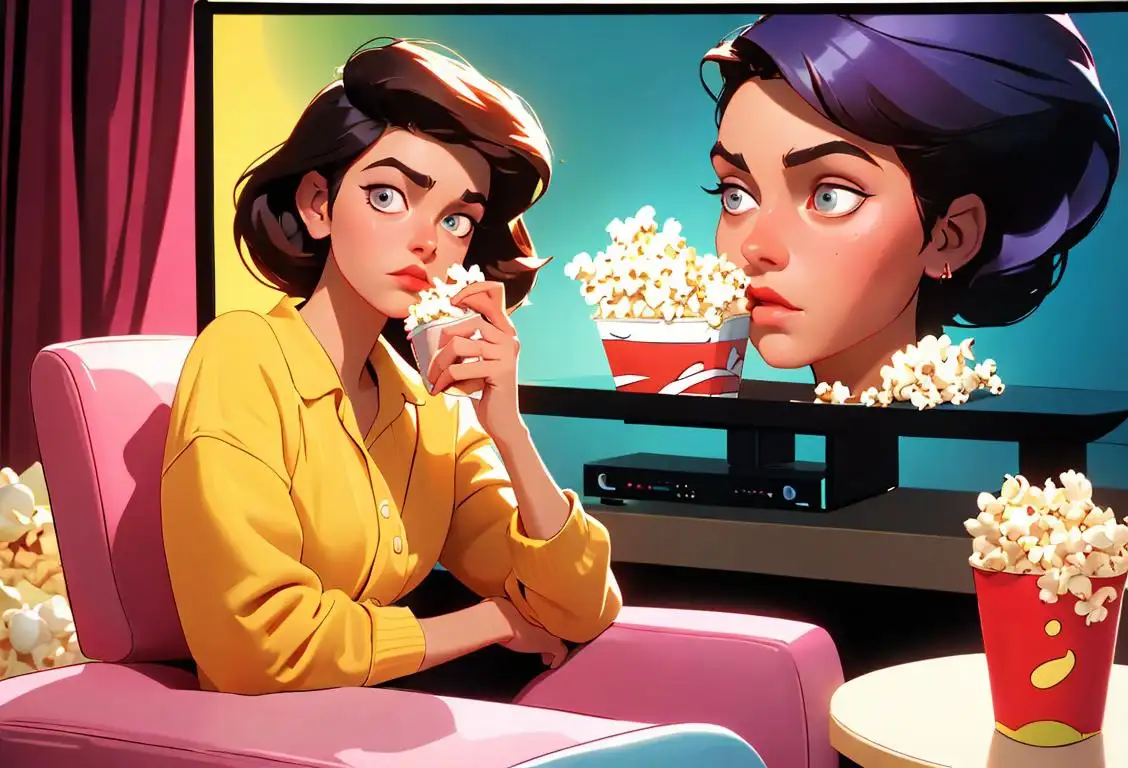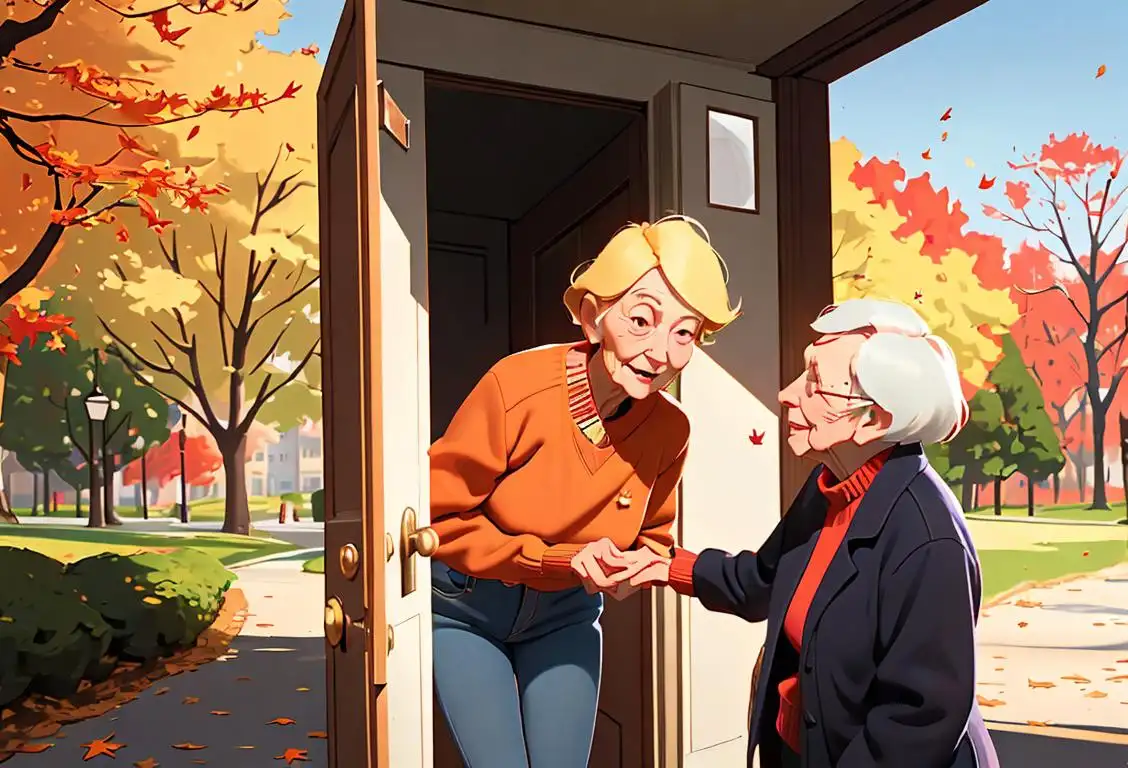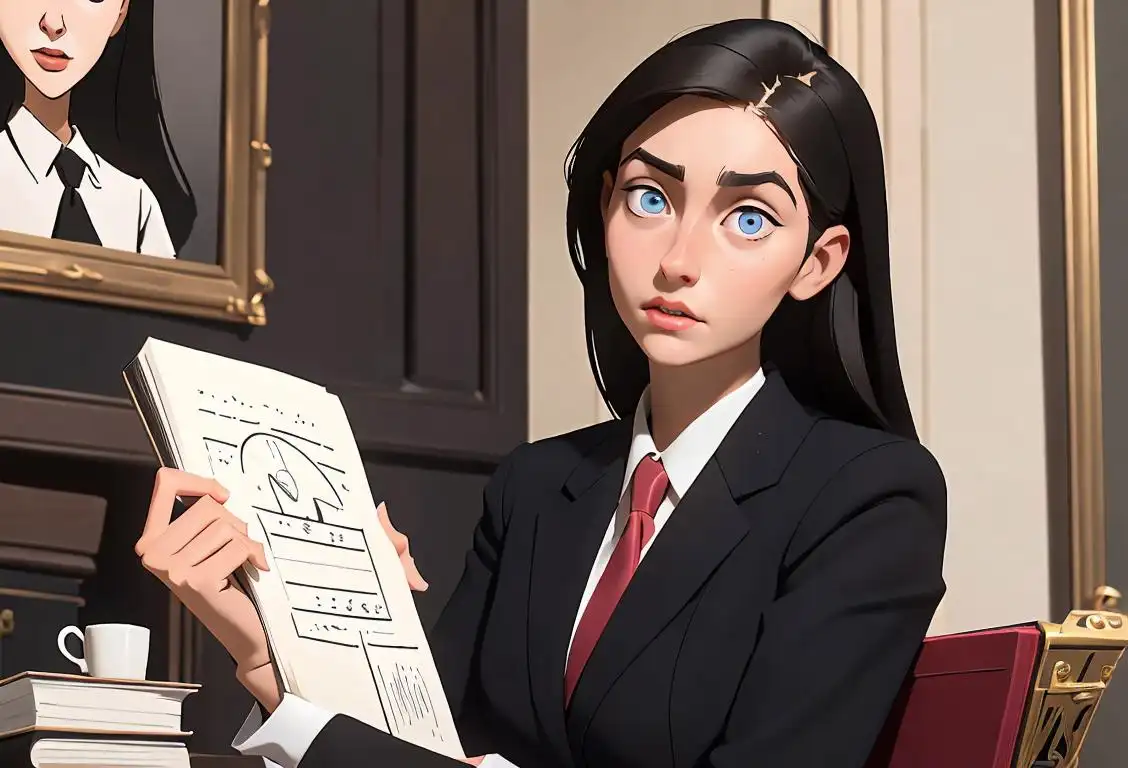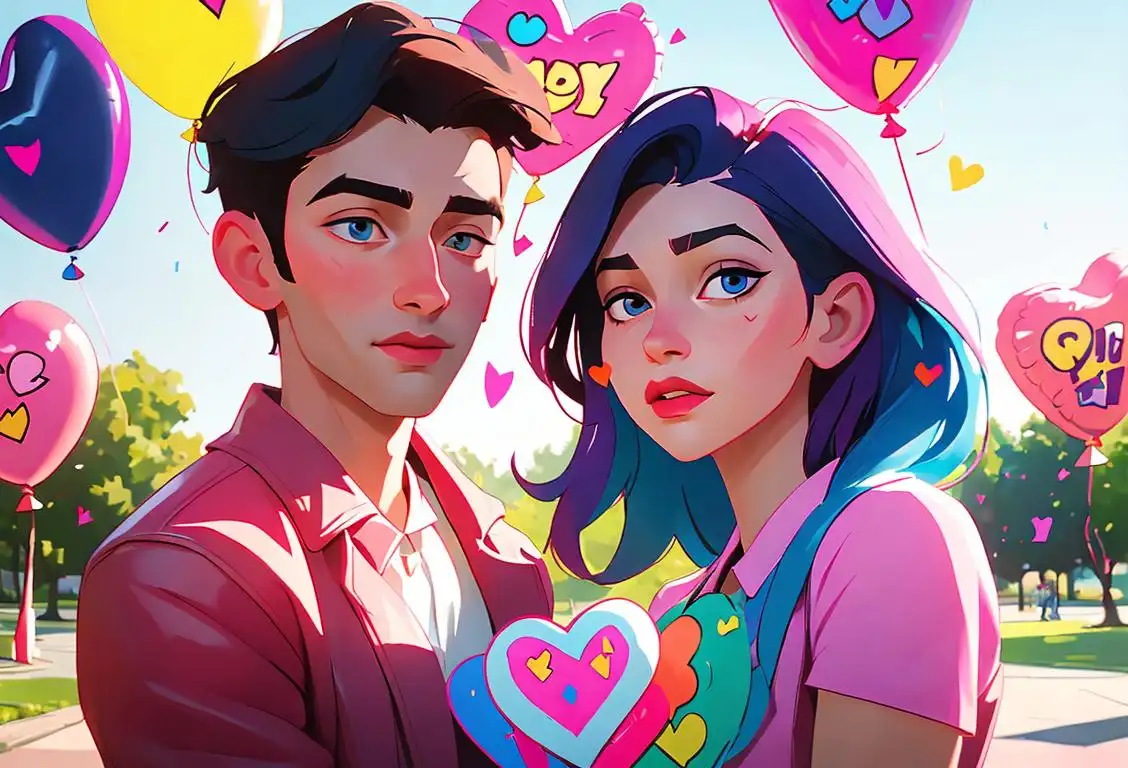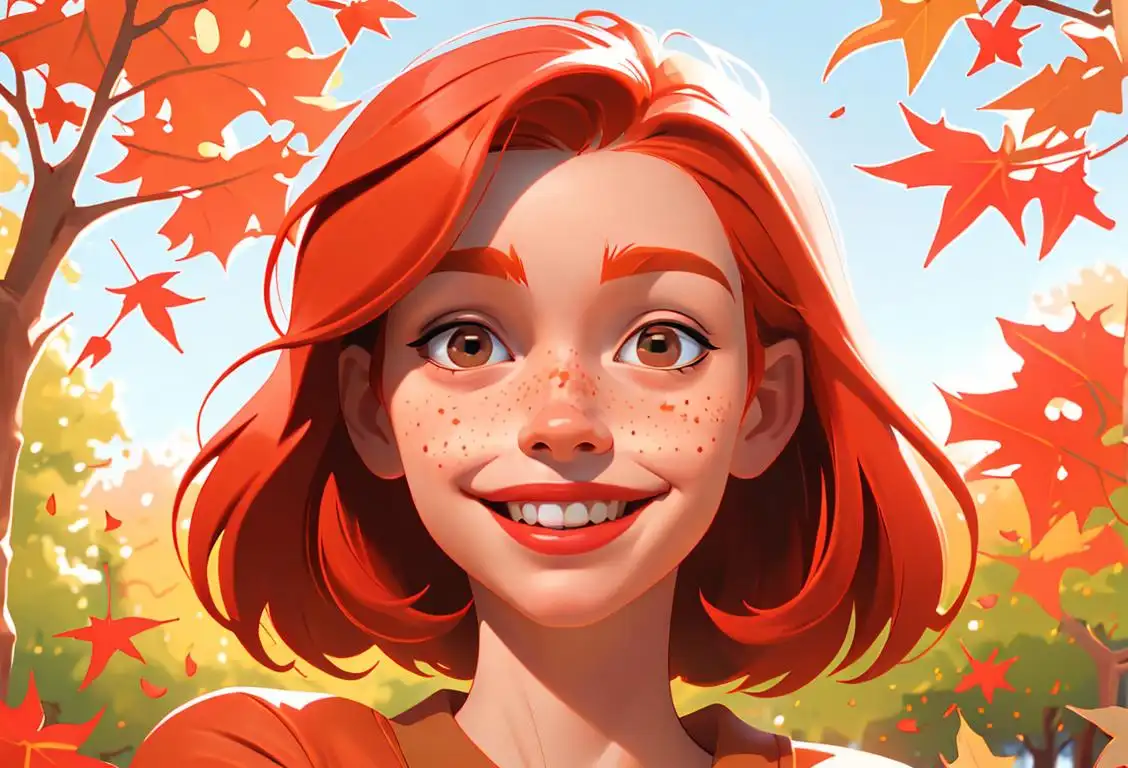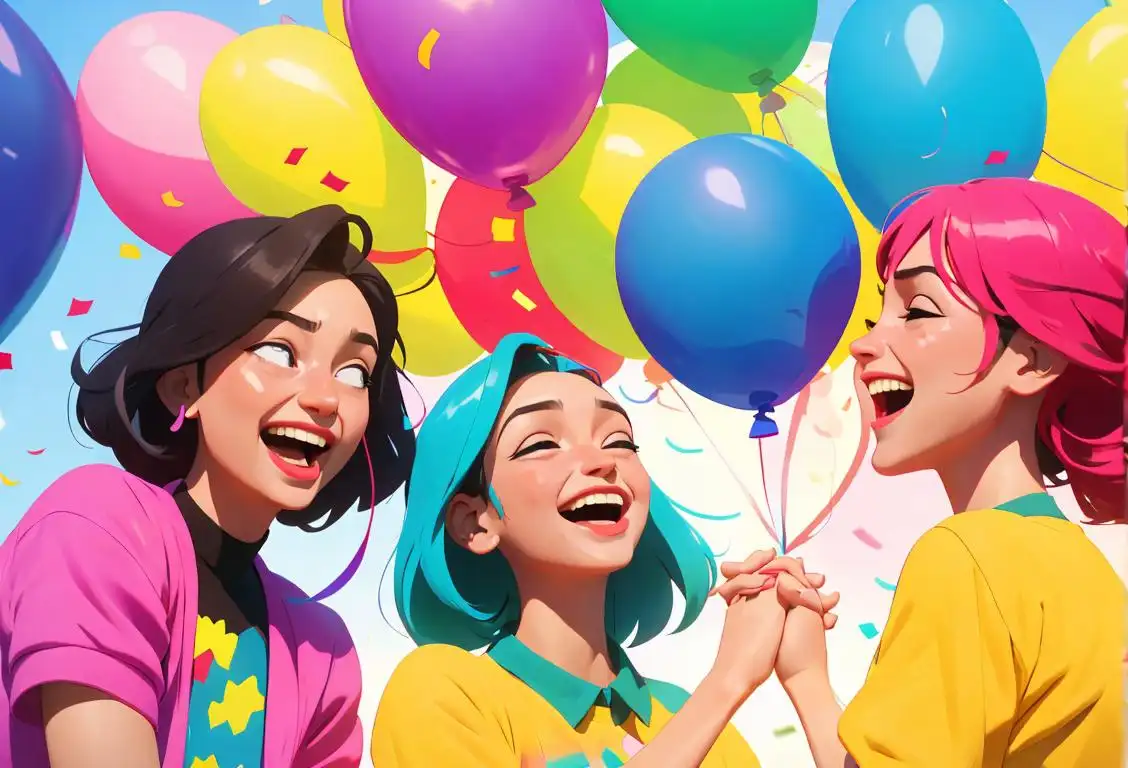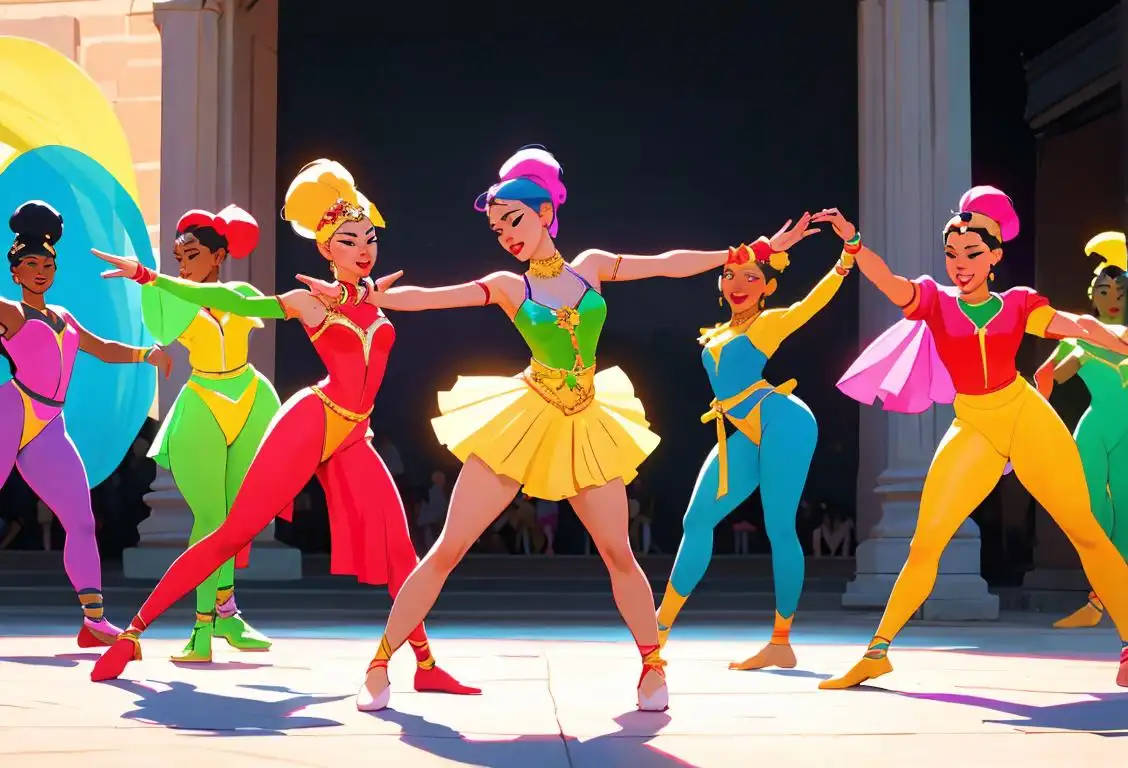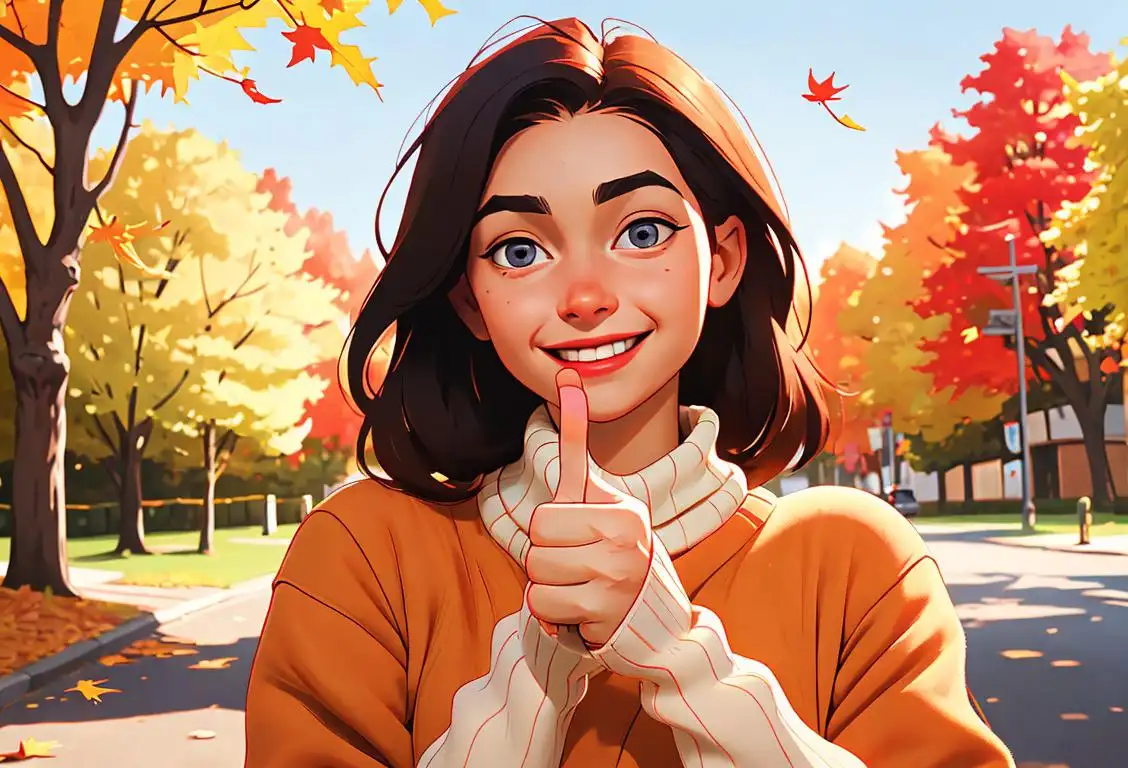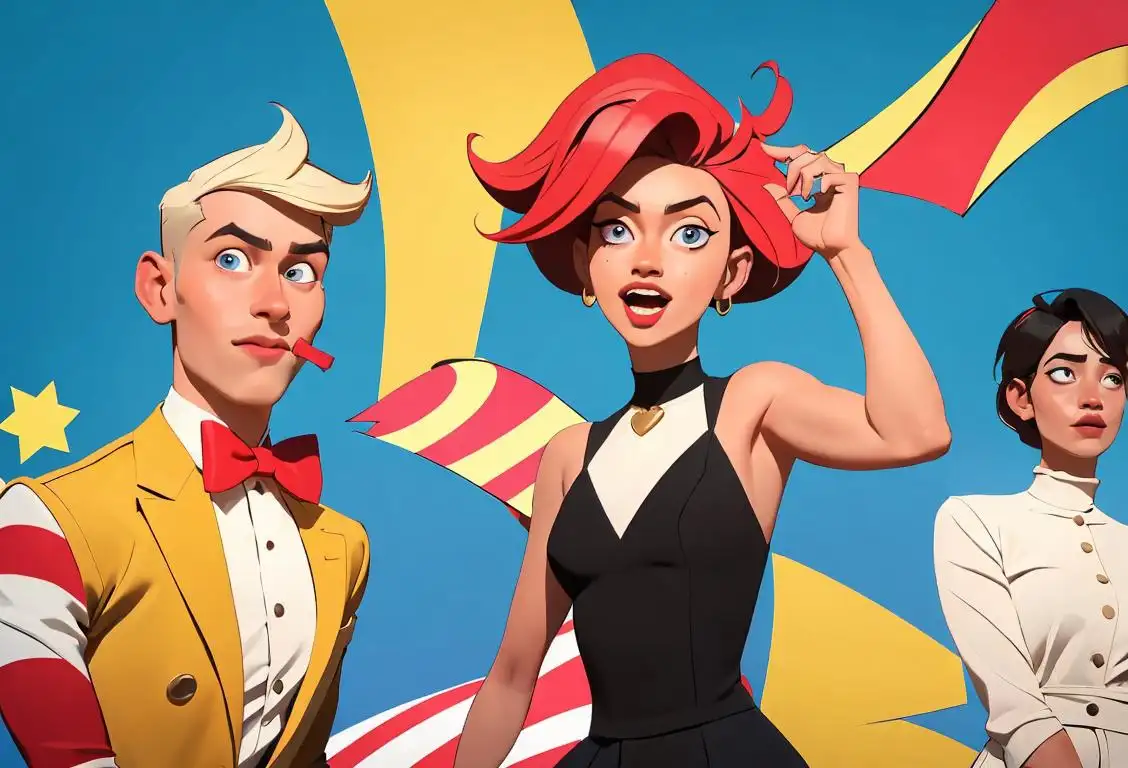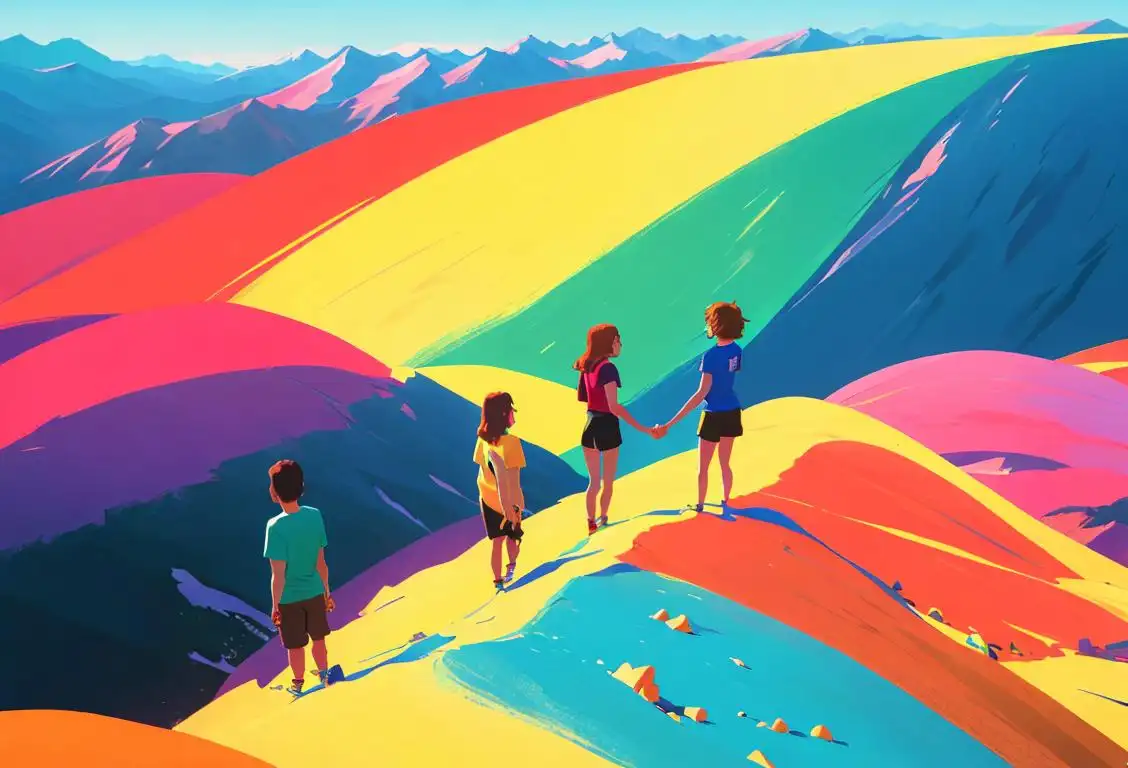National Boop Day
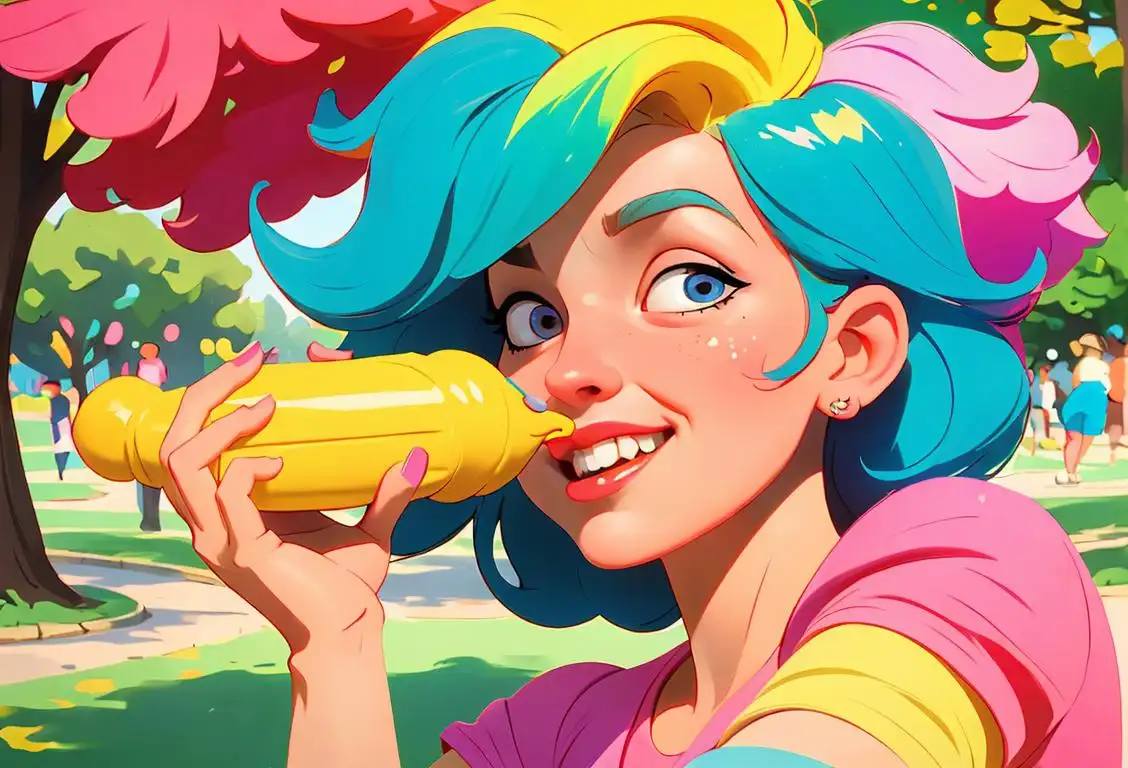
Boop! Boop! It's National Boop Day, a day filled with fun and cheeky gestures. Prepare to boop someone's nose, boop their forehead, or even boop their cheeks if you're feeling extra boop-tastic. Let's dive into the history and celebration of this playful holiday!
When is Boop Day?
It's national boop day on the 13th June.
The Origin of National Boop Day
Believe it or not, the origin of National Boop Day can be traced back to the early days of the internet. Back when social media platforms were still blossoming, there was a trend of people playfully 'booping' each other's noses in profile pictures. It quickly gained popularity and became a viral sensation, giving birth to our beloved National Boop Day.
On June 13, 2020, the internet exploded with boops. People from all corners of the web were engaging in booping battles, trying to outdo each other with boop creativity. Some booped noses were adorned with tiny boop hats, while others used special effects to create delightful boop animations. It was a boop extravaganza!
Celebrating National Boop Day
So, how do you celebrate National Boop Day? It's simple! Find a willing participant, approach them with a playful smile, and prepare your index finger for a gentle boop on their nose. Make sure to be gentle, unless the other person is a seasoned booper who likes a firm boop. Remember, safety first, folks!
If you're feeling extra adventurous, you can organize a boop-themed party with boop-themed decorations, boop-shaped snacks, and even boop-themed games. The possibilities are endless when it comes to spreading joy through boops!
Did You Know?
Did you know that the term 'boop' was made famous by the adorable cartoon character Betty Boop? Her signature boop-boop-a-doop catchphrase captured the hearts of millions and inspired the playful nature of National Boop Day. It's a boop-tacular homage to one of the greatest icons of animation history!
History behind the term 'Boop'
1928
The Birth of Boop
In 1928, the term 'boop' found its origin with the debut of 'Boop-Oop-a-Doop,' a popular song recorded by Helen Kane. The song’s catchy chorus, 'boop-boop-a-doop,' became a national sensation and spawned a dance craze. It was during this time that 'boop' began to gain recognition as an onomatopoeic word that represented the sound of a playful tap or poke.
1928
Introduction to Betty Boop
Betty Boop, a popular cartoon character, was introduced by Max Fleischer in the animated short film "Dizzy Dishes." She was initially created as a caricature of singer Helen Kane, known for her boop-oop-a-doop style of singing.
1920
Introduction of the Booping Sound
In the year 1920, the term 'boop' entered popular culture with the introduction of the booping sound effect in animated cartoons. This sound effect was often used to highlight a playful touch or a gentle tap on someone's nose or cheek. The booping sound quickly became associated with affectionate interactions and added a charming and whimsical element to the cartoons of that era.
1921
The First Boop
In 1921, the term 'boop' first appeared in the English language as onomatopoeic slang, mimicking the sound of something light or gentle tapping. It gained popularity as a playful way to describe a gentle touch or poking someone lightly.
1961
The Birth of Boop
In 1961, the term 'boop' entered popular culture through the iconic cartoon character Betty Boop. Created by Max Fleischer, Betty Boop became a cultural phenomenon, captivating audiences with her flirtatious nature and signature catchphrase, 'boop-oop-a-doop.' This character, with her playful demeanor and lively personality, helped introduce the term 'boop' into the lexicon of popular slang.
1926
Introduction in jazz music
In 1926, the term 'boop' first came into popularity within the jazz music scene. Musicians used 'boop' to describe a playful embellishment or vocalization, often performed in a high-pitched, cute manner. This term became associated with scat singing and was a way for jazz vocalists to add a unique and expressive element to their performances.
1928
The Introduction of Betty Boop
In 1928, the character Betty Boop made her first appearance in the animated short film 'Dizzy Dishes.' Created by animator Max Fleischer, Betty Boop quickly became a beloved character known for her playful personality and distinctive voice. With her large eyes, short curly hair, and flapper-style clothing, Betty Boop embodied the carefree spirit of the Roaring Twenties.
1929
Introduction in Animation
The term 'boop' was first introduced in the world of animation in the year 1929. It originated from the iconic Betty Boop, an animated cartoon character created by Max Fleischer. Betty Boop made her debut in the cartoon 'Dizzy Dishes' and quickly became a popular figure in the animation industry. Her flirtatious and playful nature, coupled with her signature catchphrase 'Boop-Oop-a-Doop,' led to the use of the term 'boop' to describe a quick, playful gesture or interaction.
1930
Betty Boop's Iconic Boop-Oop-a-Doop
The term 'boop' further gained prominence in the 1930s with the rise of Betty Boop, an animated character created by Max Fleischer. Betty Boop became known for her flirty and exuberant personality, often expressing her joy through a playful song known as the 'Boop-Oop-a-Doop.' The phrase became synonymous with Betty Boop and her unique style, leading to the popularization of the term 'boop' as a joyful expression.
1932
Boop becomes a cartoon character
In 1932, the term 'boop' gained even more prominence with the creation of Betty Boop, one of the most iconic cartoon characters of all time. Betty Boop, an animated flapper girl with a distinctive high-pitched voice, became a cultural sensation through her appearances in animated films. Betty Boop's popularity further solidified the association of the term 'boop' with playfulness, charm, and femininity.
1930
Betty Boop and the Rise in Popularity
Betty Boop, an animated cartoon character created by Max Fleischer, became a cultural icon in the 1930s. Introduced in the animated short 'Dizzy Dishes' in 1930, Betty Boop captured the hearts of audiences with her signature 'boop-oop-a-doop' catchphrase. This catchphrase, coupled with Betty Boop's playful and flirtatious persona, further solidified the association of 'boop' with charm and playfulness.
1930
Betty Boop's Introduction
In 1930, the character Betty Boop was introduced by Max Fleischer in the animated film 'Dizzy Dishes.' Betty Boop quickly became a cultural sensation, known for her cute and flirtatious personality. She popularized the term 'boop' through her catchphrase, 'Boop-Oop-a-Doop,' which she sang in a high-pitched voice, accompanied by a playful hand-poke gesture.
1930
Boop Effect on Pop Culture
Betty Boop's popularity soared in the early 1930s, capturing the hearts of audiences with her unique voice and flirtatious nature. Her trademark catchphrase, "Boop-oop-a-doop," became widely recognized and entered popular culture as a distinct vocalization.
1932
Boop as a Sound
In 1932, the term 'boop' took on a new dimension with the release of the animated short film 'Boop-Oop-a-Doop.' This film featured Betty Boop singing her iconic catchphrase, solidifying 'boop' as a distinct sound. The catchy melody and playful nature of the song further popularized the term 'boop' as a representation of playfulness and charm.
1972
The Rise of Boop
By the 1970s, 'boop' had begun to be used as a verb, representing a playful and affectionate gesture of lightly touching someone's nose or cheek. The term gained popularity as a way to convey a sense of endearment and charm in everyday interactions. It became especially prevalent in romantic relationships, symbolizing a gentle expression of love and affection.
1932
Betty Boop's Iconic Boop-Oop-a-Doop
In 1932, the character Betty Boop starred in the animated short film 'Boop-Oop-a-Doop,' which featured her signature catchphrase and song. The phrase 'boop-oop-a-doop' became synonymous with Betty Boop and her distinct vocal style. The combination of her high-pitched voice and the catchy phrase captivated audiences and made her even more popular.
1934
The Boop Boop-a-Doop Controversy
In 1934, Betty Boop's image underwent a significant transformation. Under pressure from censorship organizations, the Fleischer Studios redesigned Betty Boop, toning down her suggestive appearance and making her more wholesome. As part of this change, her iconic 'boop-oop-a-doop' phrase was replaced by 'boop boop-a-doop.' Despite the controversy, Betty Boop remained a beloved character, albeit in a slightly different form.
1980s
Boop as a Gesture
During the 1980s, the term 'boop' transformed from a mere sound to a physical gesture. Inspired by Betty Boop's flirtatious persona, people started imitating her by playfully booping others on the nose. This booping gesture became a playful way to show affection or to express a lighthearted moment. The term 'boop' became synonymous with a gentle, playful touch on the nose or cheek.
1980
Boop as a Term of Endearment
By the 1980s, 'boop' had evolved into a term of endearment, often used between couples or close friends to express affection. The word took on a loving and playful connotation, with people using it to show fondness and closeness to one another.
1980
Booping in the digital age
Fast forward to the 1980s when the personal computer revolution was at its peak. With the rise of graphical user interfaces (GUI), using a mouse to click on objects became an integral part of interacting with computers. This action of tapping on the screen or clicking on a button came to be colloquially known as 'booping'. The term 'boop' perfectly encapsulated the light and playful nature of the action, giving a sense of delight when interacting with a digital interface.
1940
Boop as a Term of Endearment
During the 1940s, the term 'boop' started being used as a term of endearment. It became a way to display fondness, affection, or playfulness towards loved ones. The association with Betty Boop's charm and the nostalgic connection to animated cartoons created a lasting impact on how 'boop' was perceived. It grew beyond its initial sound effect usage and became a symbol of love and warmth.
1932
Censorship Controversy
Betty Boop faced censorship and increased regulation due to the growing enforcement of the Hays Code, a set of guidelines for content in motion pictures. Her suggestive image and behavior were toned down, reflecting the changing social and moral standards of the time.
1932
The Boop Boop a Doop Girl
Helen Kane, often referred to as the 'Boop Boop a Doop Girl,' embraced the association of her name with the term 'boop.' Recognizing its popularity, Kane incorporated 'boop' into her stage persona and performances, further popularizing the term. She was known for her captivating style, complete with a headband and her signature 'boop-boop-a-doop' scat singing.
1989
Boop in Pop Culture
In 1989, the term 'boop' made its way into mainstream pop culture through the movie 'When Harry Met Sally.' In one memorable scene, Sally (played by Meg Ryan) playfully boops Harry's (played by Billy Crystal) nose while discussing their evolving friendship. This scene further solidified 'boop' as a symbol of playful affection and added to its cultural significance.
1980s
Boop Resurgence and Nostalgia
In the 1980s, popular culture experienced a resurgence of interest in Betty Boop. Her vintage cartoons gained a new generation of fans, and her iconic "Boop-oop-a-doop" catchphrase was reintroduced through various media and merchandise. Betty Boop became a symbol of nostalgia and retro style.
1960
Boop's Influence on Pop Culture
In the 1960s, 'boop' made its mark on popular culture as it continued to evolve. It became a popular catchphrase and was immortalized in songs, commercials, and various forms of media. The cultural impact of the word 'boop' expanded beyond cartoons and found its way into everyday conversations, representing a lighthearted and affectionate gesture in people's lives.
2007
Internet Meme and Boop Nose Trend
In 2007, the term 'boop' gained renewed popularity through internet memes. People began using 'boop' to describe gently touching someone's nose, often captured in adorable animal videos or photos. This trend popularized the 'boop nose' gesture, where people playfully boop someone's nose, often resulting in laughter and smiles.
1998
Booping Goes Digital
With the advent of the internet and the rise of social media in the late 1990s, 'boop' took on a new life in the digital realm. Online communities and forums embraced the term, using it to describe the act of quickly and lightly tapping someone's digital avatar or profile picture. 'Booping' someone's profile picture became a playful way to interact and connect in the virtual world.
2000
Boop in internet culture
The term 'boop' found a new life in internet culture during the early 2000s. As social media and online communities grew, users began playfully using 'boop' to describe poking or touching someone virtually. It became a way of affectionately getting someone's attention or playfully bothering them in a lighthearted manner. 'Boop' became a popular term in comment sections, online chats, and memes as a way to express warmth, attention, or gentle teasing.
Internet Era
Boop Meme and Internet Culture
With the rise of internet culture in the late 20th century, the term 'boop' gained even more popularity. Memes featuring animals, often cats, playfully booping things or people became widely shared on various online platforms. The booping meme captured the charm and cuteness attributed to the term. 'Boop' became a viral sensation and a commonly used expression in digital communities, symbolizing a gentle and lighthearted interaction.
1980s
Boop Enters Mainstream Vernacular
In the 1980s, 'boop' experienced a resurgence in popularity, thanks in part to the rise of computer graphics and animation. The term became associated with the act of pressing buttons or touching screens, mimicking the playful and gentle nature of a boop. From this point on, 'boop' became a common term used to describe lighthearted interactions and actions that involve intentionally tapping or poking someone or something.
1939
Betty Boop Fades from the Mainstream
By the late 1930s, Betty Boop's popularity began to decline. The Hays Code, a set of industry guidelines for self-censorship in Hollywood, became stricter, leading to the further modification of Betty Boop's image. The character's sexualized nature was seen as inappropriate for the new standards. As a result, Betty Boop's cartoons became less frequent, and her once-prominent presence in pop culture waned.
2021
Boop in Pop Culture
In today's pop culture, 'boop' is widely recognized as a lighthearted expression of affection or playfulness. It has been adopted in various forms, including merchandise, greeting cards, and social media hashtags. People continue to use 'boop' to spread joy and create connections through small, loving gestures.
Present Day
Boop in Popular Culture
Today, the term 'boop' has become firmly ingrained in popular culture. From adorable animal videos to social media tags, 'boop' continues to represent playful, affectionate moments. Its appeal transcends language barriers and is embraced globally. The term 'boop' remains a fond homage to the timeless charm of Betty Boop and serves as a reminder of the joy and playfulness that animation and internet culture bring into our lives.
Present
The Boop Phenomenon
Today, 'boop' has transcended its origins and has become a beloved term used in social media, memes, and digital interactions. It has become a global symbol of playful affection and is frequently used to refer to gentle taps, nose-to-nose interactions, and expressing fondness for adorable things. The term 'boop' continues to bring smiles, joy, and a touch of sweetness to people's lives, serving as a reminder of the lasting impact of animated cartoons and the joy they bring.
1980s
Revival of Betty Boop's Popularity
In the 1980s, Betty Boop experienced a resurgence in popularity due to increased nostalgia for vintage cartoons. Her distinctive style, iconic catchphrase, and playful demeanor appealed to a new generation. Betty Boop merchandise became popular, appearing on clothing, accessories, and various consumer products. This revival further solidified Betty Boop's cultural impact, making her a timeless symbol of animation history.
Present Day
Booping in the Digital Age
With the advent of social media and digital communication, 'boop' has found a new home in the virtual world. People now use 'boop' as an endearing and playful way to interact with others online. From sending a virtual boop to tagging friends in booping memes, the term has become a cute and affectionate expression of affection in the digital age.
Present
Continued boop enthusiasm
Today, the term 'boop' has cemented its place in pop culture and continues to be used in various contexts. From jazz music to cartoon characters, from digital interfaces to playful virtual interactions, 'boop' has become a versatile term that encapsulates light-heartedness and affection. It showcases the enduring power of language and how a simple expression can evolve and adapt across different eras and mediums.
2009
Internet Meme and 'Booping' Social Media
The term 'boop' took on a new meaning in the online world with the rise of internet memes. 'Booping' refers to playfully poking someone or something on the nose. This concept became popular in a variety of social media platforms, where users began sharing boop-themed content, ranging from cute animal videos to playful interactions between friends.
2010
Boop Becomes an Onomatopoeia
In the 2010s, 'boop' solidified its status as an onomatopoeia, representing the sound of a light touch or tap. It transcended its origins as a slang term and became a recognizable sound effect often used in comic strips, animations, and video games to depict playful interactions and gentle contact. This further cemented 'boop' as a universal symbol of affectionate playfulness.
Did you know?
Did you know that the term 'boop' was made famous by the adorable cartoon character Betty Boop? Her signature boop-boop-a-doop catchphrase captured the hearts of millions and inspired the playful nature of National Boop Day.Tagged
romance funFirst identified
13th June 2020Most mentioned on
13th June 2020Total mentions
4Other days
Tv On The Same Day
Do Something Nice Day
Honesty Day
Iloveyou Day
Kiss A Ginger Day
Happiness Day
Dance Day
Compliment Day
Single Ppl Day
Suicide Prevention Month Day
